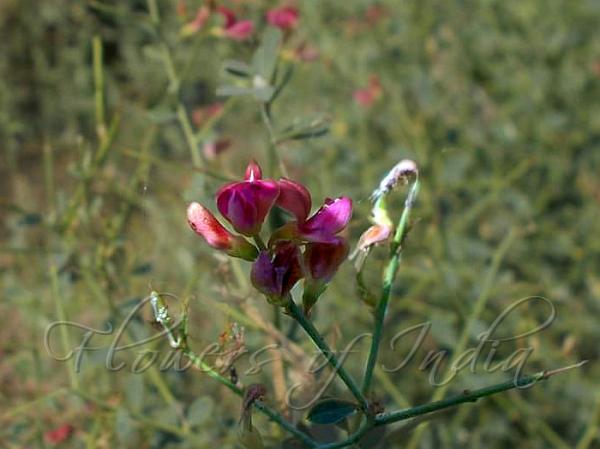|
| Camel Thorn |
|

|

|
|
|
|
Photo: |
Botanical name: Alhagi maurorum Family: Fabaceae (Pea family)
Synonyms: Alhagi pseudalhagi, Alhagi camelorum, Alhagi persarum
Synonyms: Alhagi pseudalhagi, Alhagi camelorum, Alhagi persarum
Camel Thorn is an undershrub, 2-3 ft cm tall, hairless
or velvet-hairy, often used as camel fodder. Leaves are simple, 1.0-2.5
cm long, 3-8 mm broad, obovate or elliptic-oblong, hairless or
velvet-hairy, entire, apiculate; leaf-stalk about 2 mm; stipules
minute. Flowers are borne in lateral, leaf-axils racemes, 1-5 cm long,
ending in spine. Flower-stalks are 1-3 mm, with 1-2 minute bracteoles.
Calyx is 2-2.5 mm, hairless, teeth almost obsolete to triangular.
Flowers are 6-9 mm long, pink or reddish-violet. Fruit is 2.0-3.5 cm
long, 2-3 mm broad, hairless, more or less constricted between the
seeds, 1-9-seeded. Camel Thorn is found in Pakistan, Kashmir, Iran,
Afghanistan; Russia, Turkey, Iraq, Syria, Palestine, Cyprus, N Africa.
It is also found in Western Himalayas. Flowering: April-September.
Medicinal uses: An oil from the leaves is used
in the treatment of rheumatism. The flowers are used in the treatment
of piles.
An oil from the leaves is used
in the treatment of rheumatism. The flowers are used in the treatment
of piles.
Medicinal uses:
 An oil from the leaves is used
in the treatment of rheumatism. The flowers are used in the treatment
of piles.
An oil from the leaves is used
in the treatment of rheumatism. The flowers are used in the treatment
of piles. | Identification credit: Ankush Dave | Photographed in Dholpur, Rajasthan. |
• Is this flower misidentified? If yes,